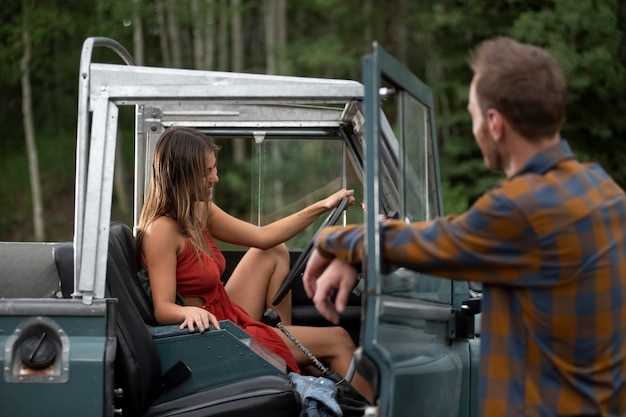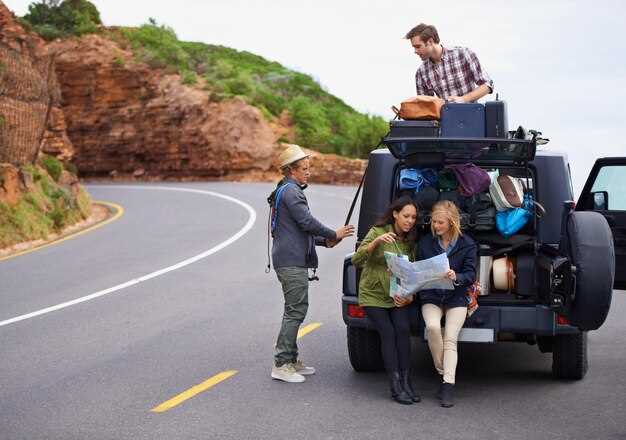How to organize a local Jeep trail ride


Organizing a local Jeep trail ride is a fantastic way to bring together a group of off-road enthusiasts and enjoy the great outdoors. Whether you are a seasoned veteran or a newcomer to the off-roading community, planning an event that runs smoothly requires careful preparation and attention to detail. In this guide, we will explore the essential steps to ensure that your trail ride is not only enjoyable but also safe and memorable for all participants.
First and foremost, it is crucial to establish a clear vision of what you want your event to achieve. Are you aiming for an adventurous day filled with challenging terrains, or a more relaxed outing to enjoy the scenic views? Setting a specific goal will help you choose the right trail, plan the logistics, and communicate effectively with your group. Understanding the capabilities of the vehicles and the experience levels of your participants will allow for a well-matched and engaging experience.
Once your goals are defined, it is time to select a suitable location. Research local trails that accommodate different skill levels and are accessible for your group size. Consider factors like trail conditions, weather forecasts, and any necessary permits. Proper planning at this stage will go a long way in ensuring a smooth and enjoyable event, allowing everyone to focus on the fun and excitement of off-roading together.
Choosing the Right Trail: Factors to Consider

When planning a successful local Jeep trail ride event, selecting the right trail is crucial for ensuring an enjoyable experience for all participants. Several factors should be carefully evaluated before making a decision.
Trail Difficulty Level: Consider the skill levels of the participants. Trails are often rated as easy, moderate, or difficult. Choose a trail that matches the capabilities of the group to prevent frustration and enhance safety. It’s essential to have a mix of challenges for various skill levels if your group is diverse.
Terrain Type: Different trails offer varying terrain types, such as rocky paths, sandy beaches, mud pits, or forest trails. Assess what kind of off-road experience your group is seeking. For example, if your participants prefer technical obstacles, select a rugged trail with rocks and steep inclines; if they prefer scenic views, consider paths that offer beautiful landscapes.
Trail Length and Duration: Evaluate how long the trail will take to complete. Consider the total distance, average speed, and expected breaks. A well-planned event should ideally not exceed participants’ stamina, ensuring everyone remains energized and engaged throughout.
Weather Conditions: Always check the weather forecast for the event date. Wet or extreme weather can significantly alter trail conditions, affecting safety and driveability. Be prepared to modify the trail choice based on current and predicted weather to avoid hazards.
Trail Access and Regulations: Verify that the chosen trail is accessible for your group and meets all local regulations. Some trails may require permits, have seasonal closures, or possess specific restrictions. Respecting these rules will promote responsible off-roading and protect natural resources.
Safety Considerations: Always keep safety in mind. Examine the trail for potential hazards, such as sharp turns, steep drops, or narrow passageways. Make sure to have a first-aid kit, necessary recovery gear, and a plan for emergencies to enhance overall safety during the event.
In summary, a successful Jeep trail ride focuses on thoughtful planning and consideration of various factors. By carefully evaluating the trail difficulty, terrain type, length, weather conditions, regulations, and safety, you can create a memorable and exciting off-road adventure for all participants.
Coordinating Logistics: Permits, Safety, and Supplies
When planning an off-road Jeep trail ride, securing the necessary permits is a crucial first step. Many trails require specific permissions, especially if they are located in protected areas or national parks. Check local regulations and contact the managing agency to ensure compliance. Be prepared to provide details about the event, such as the number of participants and the planned route.
Safety should be a top priority during the event. Organizing a pre-ride safety briefing is essential. This meeting should cover trail etiquette, communication protocols, and emergency procedures. Ensure that all participants are informed about the importance of traveling in groups and the buddy system, as well as carrying necessary safety equipment like first aid kits, fire extinguishers, and recovery gear.
Supplies play a significant role in the overall success of your off-road adventure. Create a comprehensive checklist that includes essentials such as food, water, tools, spare parts, and personal gear. Encourage participants to bring their own recovery equipment and to equip their vehicles for potential challenges on the trail. Consider also arranging a supply drop-off point or a support vehicle to enhance readiness for any unforeseen circumstances.
Proper planning and organization of permits, safety measures, and supplies will ensure a memorable and enjoyable event for all participants. Stay informed, prepared, and ready to tackle the adventure ahead!
Engaging and Managing Participants: Communication Strategies

Effective communication is crucial for the success of any off-road event, especially when organizing a local Jeep trail ride. To ensure participants feel engaged and informed, establish clear communication channels before, during, and after the event.
Start by creating a dedicated platform for updates and discussions. Consider utilizing social media groups or messaging apps where participants can ask questions, share experiences, and connect with other members of the group. This fosters a sense of community and builds anticipation leading up to the event.
Provide comprehensive pre-event information. Share details such as the trail map, expected weather conditions, required gear, and safety guidelines. Create a formal agenda that highlights key meeting points and times throughout the ride, enhancing overall organization and participant satisfaction.
During the event, maintain open lines of communication. Use two-way radios or a group messaging app to relay important messages, such as changes in the route or safety concerns. Appoint trail leaders and sweepers to guide the group while ensuring that everyone is accounted for and aware of their surroundings.
Post-event engagement is just as important. Encourage participants to share their experiences, photos, and feedback through the same platform established earlier. This not only reinforces community bonds but also provides valuable insights for future events. Actively responding to feedback demonstrates appreciation for participants’ involvement and helps improve future rides.
By implementing these communication strategies, you can effectively engage and manage participants, ensuring a memorable and successful off-road Jeep trail ride experience.
